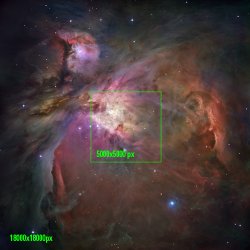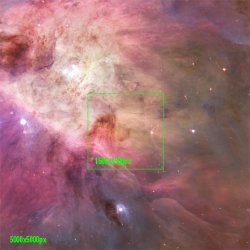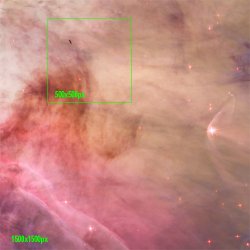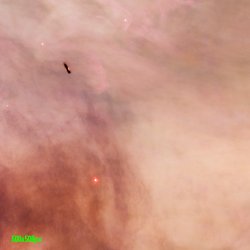jayscheuerle said:I can't seem to find any information in megapixel terms either, but you can bet that this is comprised of hundreds, if not thousands of frames. Each frame may contain many exposures as well.
"This extensive study took 105 Hubble orbits to complete. All imaging instruments aboard the telescope the ACS, Wide Field and Planetary Camera 2, and Near Infrared Camera and Multi-Object Spectrometer were used simultaneously to study the nebula. The ACS mosaic covers approximately the apparent angular size of the full moon." (from the image's site.)
The Advanced Camera for Survyes (ACS) is actually several cameras in one.
Wide Field Camera: http://acs.pha.jhu.edu/instrument/detectors/WFC/
# 350 - 1050 nanometer spectral response
# 202" × 202" field of view
# 0.049" pixel size
# 2 butted 2048 × 4096, 15 µm/pixel CCD detectors
High Resolution Channel: http://acs.pha.jhu.edu/instrument/detectors/HRC/
# 200 - 1050 nanometer spectral response
# 29.1" × 26.1" field of view
# 0.028" × 0.025" pixel size
# 1024 × 1024, 21 µm/pixel, near UV-enhanced CCD detector
Solar Blind Camera:
# 115 - 180 nanometer spectral response
# 34.59" × 30.8" field of view
# 0.033" × 0.030" pixel size
# 1024 × 1024, Csl 25 µm/pixel MAMA detector (STIS spare)





